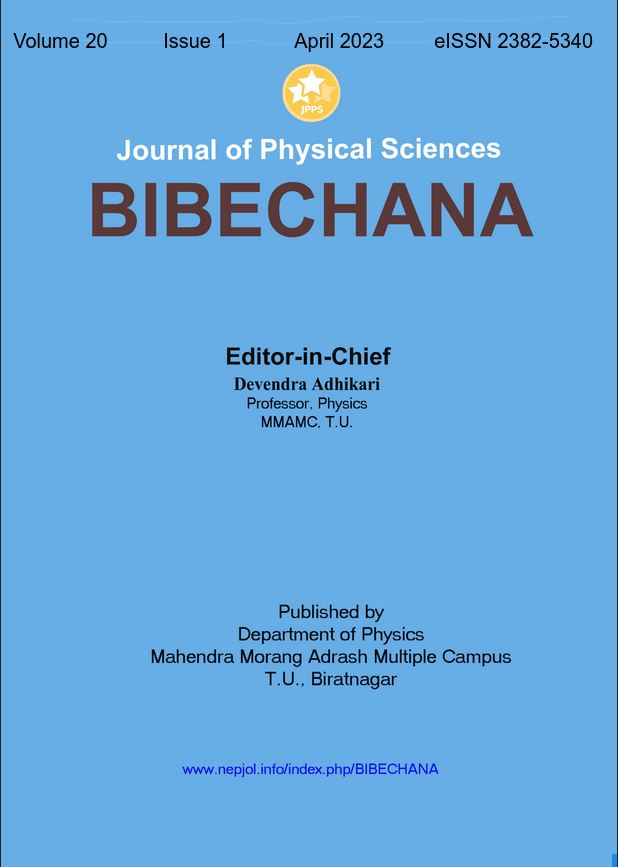A systematic study on material properties of water retted Sterculia and Bauhinia fiber
DOI:
https://doi.org/10.3126/bibechana.v20i1.51793Keywords:
Lignocellulose, Water retting, Fiber processing, Cellulose fiberAbstract
Lignocellulose biomass forms an important component of traditional and next generation composite materials. To obtain desired properties, the biomass needs to be chemo‒mechanically processed at different levels. The raw lignocellulose fiber obtained from Sterculia villosa (Roxb.) and Bauhinia vahlii is traditionally believed to have high water stability; and therefore used in rural areas of South Asian regions to secure objects submerged under water. In this research, we systematically studied several material properties of raw Sterculia and Bauhinia fiber samples retted for 0, 20, 30 and 55 days (n=8). Water retting resulted in significant decrease in lignin and extractives content (p<0.05) and increase in cellulose content. Fiber bundle strength of Sterculia fiber increased with retting time (R2= 0.7) but Bauhinia fiber did not show significant change (p>0.05). Interestingly, water retting resulted in increased thermal stability in both fiber types. These findings suggested that the fiber studied have excellent water stability. The observed trend in mechanical and thermal properties could have resulted from crystallinity change and/or nominal fiber damage as supported by XRD and SEM imaging data; respectively. These findings suggested that Sterculia and Bauhinia fiber biomass could be an important component of biodegradable composite materials which are intended for high wetting and/or humid conditions.
Downloads
Downloads
Published
How to Cite
Issue
Section
License
Copyright (c) 2023 Krishna Prasad Kandel, Girja Mani Aryal, Shishir Acharya KC, Mahesh Kumar Joshi, Bipeen Dahal, Bhanu Bhakta Neupane

This work is licensed under a Creative Commons Attribution-NonCommercial 4.0 International License.
This license enables reusers to distribute, remix, adapt, and build upon the material in any medium or format for noncommercial purposes only, and only so long as attribution is given to the creator.




